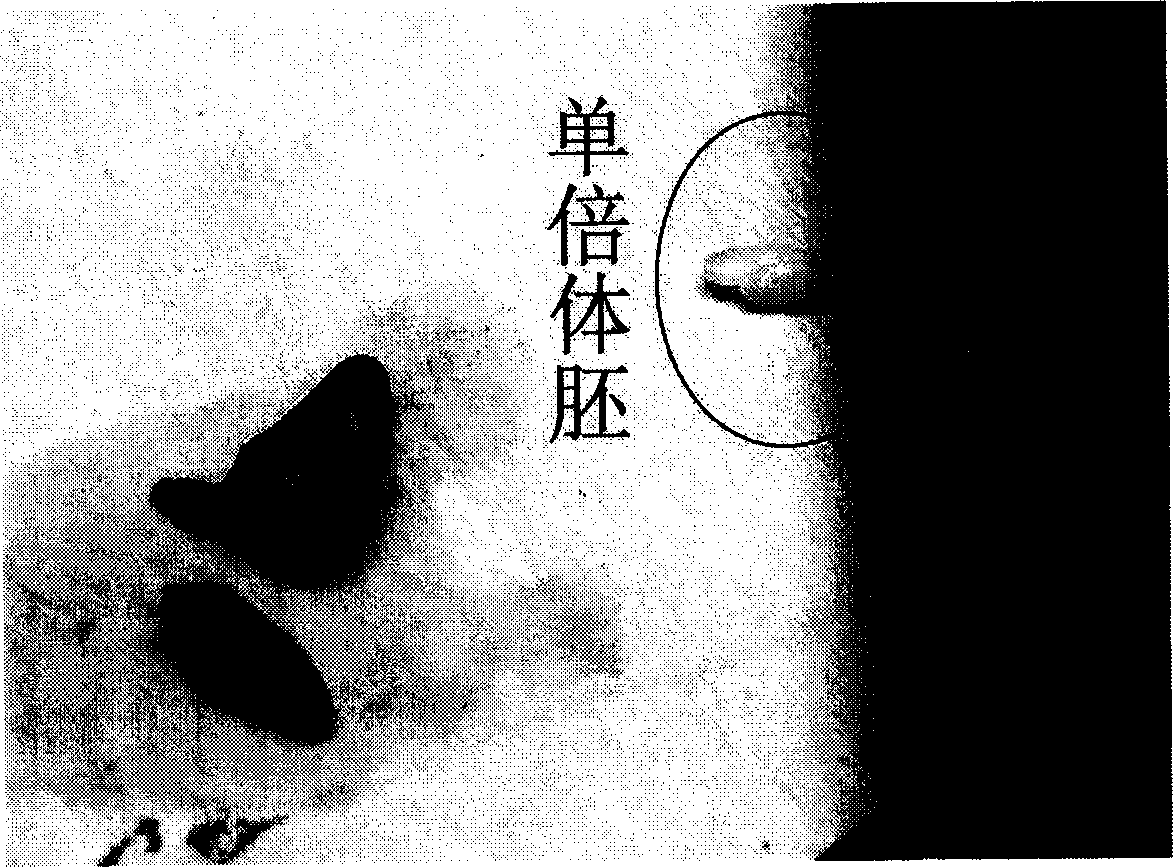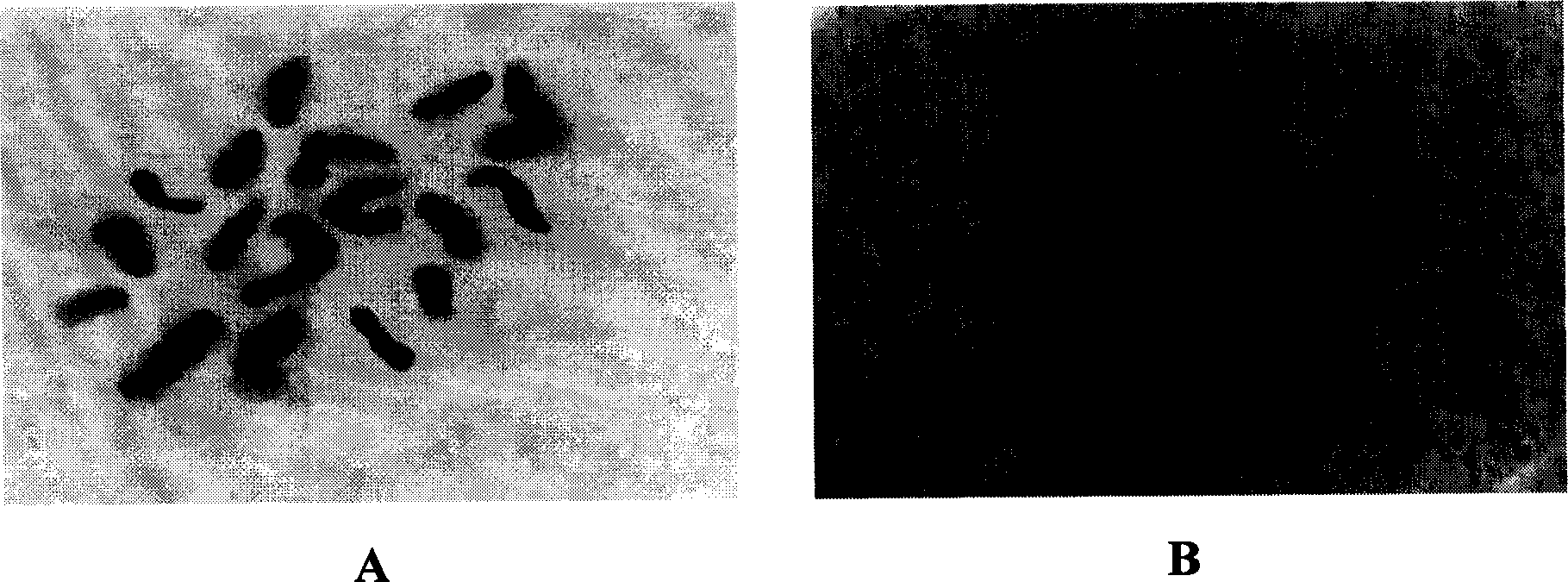Method for preparing plant haploid embryo and haploid plant
A haploid and plant technology, applied in the field of plant cultivation, can solve the problems of harsh cultivation conditions, high cost, complicated procedures, etc., and achieve the effects of low cultivation conditions, low cost and simple operation.
- Summary
- Abstract
- Description
- Claims
- Application Information
AI Technical Summary
Problems solved by technology
Method used
Image
Examples
Embodiment 1
[0042] The preparation of embodiment 1 haploid embryo
[0043] 1, choose 20 well-grown loquat plants (kinds are all big five-star), be divided into 2 groups at random: 4 strains are control group, 16 strains are experimental group, before loquat is about to bloom 1-2 days, from each plant growth vigor On a good inflorescence, select 1 to 4 spherical flowers per inflorescence (the flowers in this period have not yet opened, and the pollen has not yet matured, so the pollination and fertilization process has not occurred), and all the remaining flowers are removed. Remove the selected spherical flowers, and use ophthalmic scissors to cut off 1 to 4 of the 5 stigmas (cut off 1 at random, or cut 2 to 3 stigmas at intervals, or keep only one in the center of the flower, Cut off 4).
[0044] 2. When the petals are open (2 to 3 days after removing the stigma), give the remaining 1 to 4 stigmas a sufficient amount of mixed pollen (Dawuxing: Longquan No. 1 = 1:1).
[0045] 3. Remove ...
Embodiment 2
[0049] The preparation of embodiment 2 haploid plants
[0050] The haploid embryos prepared from Group A in Example 1 were directly inoculated on sterilized MS medium respectively, and directly inoculated on the culture medium supplemented with 6-BA 0.5mg / L, NAA 0.1mg / L, IBA 0.1mg / L and 0.5% activated carbon on sterilized MS medium, cultured in the dark at 25±1°C for 15 days, 25±1°C, 18 hours in the light, 6 hours in the dark, and cultivated into seedlings under 1500lux light intensity (about one month after cultivation) .
[0051] After growing into a complete seedling, the haploid loquat is hardened to adapt to the external environment. The seedling hardening method is as follows: move the culture bottle to room temperature (15-25°C) for 2 days to allow the cultivated haploid seedlings to gradually adapt to changes in external light and temperature; then remove the sterile sealing film of the culture bottle to allow the outside Air enters the culture bottle, so that the ha...
Embodiment 3
[0053] The preparation of embodiment 3 haploid plants
[0054] The haploid embryos prepared by group B in Example 1 were directly inoculated on the sterilized MS medium, and directly inoculated on the medium added with 6-BA 0.3mg / L, NAA0.05mg / L, IBA0.05mg / L and Put 0.3% activated carbon on sterilized MS medium, culture in the dark at 25±1°C for 7 days, then culture at 25±1°C for 18 hours in the light, 6 hours in the dark, and 2000lux light intensity to grow into seedlings (after about one month of cultivation) .
[0055] After growing into a complete seedling, the haploid loquat is hardened to adapt to the external environment. The seedling hardening method is as follows: move the culture bottle to room temperature (15-25°C) for 3 days to allow the cultured haploid seedlings to gradually adapt to the changes in external light and temperature; then remove the sterile sealing film of the culture bottle to make the outside world The air enters the culture bottle, so that the ha...
PUM
 Login to View More
Login to View More Abstract
Description
Claims
Application Information
 Login to View More
Login to View More - R&D
- Intellectual Property
- Life Sciences
- Materials
- Tech Scout
- Unparalleled Data Quality
- Higher Quality Content
- 60% Fewer Hallucinations
Browse by: Latest US Patents, China's latest patents, Technical Efficacy Thesaurus, Application Domain, Technology Topic, Popular Technical Reports.
© 2025 PatSnap. All rights reserved.Legal|Privacy policy|Modern Slavery Act Transparency Statement|Sitemap|About US| Contact US: help@patsnap.com


